The command line is a powerful tool, and sadly forsaken by most of us.
The goal of this post is to reconcile some of you with the CLI (Command Line Interface), wether you are a developer or not.
When coding, we find ourselves confronted to this choice: IDE or text editor + CLI?
Modern IDE embed (almost) all the required dev tools: code edition, syntax highlighting, automatic formatting, versioning, compilation, debugging, ... and even runtime environments!
Thus, why choose a simple text editor?
Personally, I made this choice because I'd rather use one tool for each task than one tool for every tasks.
I prefer learn to master each tool, probably more deeply than in an IDE, even if it requires more time, than let the IDE do all the stuff for me and be stuck in case of problem.
It may seem philosophic, but in an IDE, we may sometimes feel constrained and restricted to the proposed features whereas in the CLI, there are plenty of tools, scripts, frameworks for many use cases, many environments, many languages... And the power of Unix allows the interoperability of all these commands.
Of course, if you're under Windows, you'll get into some troubles, because terminal emulators have their limits, but if you're convinced by the CLI, you'll take the plunge by switching to Linux (or maybe just use WSL if you're under Windows 10 :)).
🐟 fish shell
fish shell (or "fish") is a shell oriented to the user interaction, in opposition to Bash which is more scripting-oriented. Thus, it's a good candidate for a daily and interactive usage.
It includes native syntax highlighting for many commands and tools, and autocompletion is, as well native.
Zsh is another credible alternative for this kind of use-cases.
Here is an example of autocompletion with git:
By typing git, then <tab>, fish propose the list of the git commands (checkout, commit, log, ...). By pressing several times <tab>, we can browse the commands until we reach the desired one, and then we just have to click on <enter> to validate (e.g. git checkout), and here fish shows all its magic: it's able to autocomplete the list of the git branches of your repo! Of course, it works with many other tools than git.
Two frameworks allow to enhance the fish features: oh-my-fish and fisherman.
Both of them allow to install themes for the prompt and plugins.
💲 prompt
At first sight, customize his prompt may seem useless, but if the CLI is your main UI, then it becomes mandatory.
It allows to know, among others, for git:
- on which branch you are
- if you have commits to push/pull to/from the remote
- if your index is clean or not, if you have uncommitted or untracked files
- ...
But also:
- in which folder you are
- what is the status of the last command
- the response time of the last command
- ...
There are dozens of prompts available, so everyone will be able to choose according to its own preferences. On my side, I selected two of them: bobthefish and neolambda, that you can install with oh-my-fish : omf install bobthefish.
The first one, highly visual, is based on powerline, a status-line for Vim that includes many patterns and symbols to make it more user-friendly:
The second one is sleeker and with less features, but yet interesting (omf install neolambda):
Apart from the prompt, many plugins allow to enhance the user journey, in particular:
-
colorman which adds syntax highlighting for the man pages (
omf install colorman) -
grc that adds syntax highlighting for many Unix commands: tail, ping, cat, ps, df, ... (to install it:
fisher grc)- Example with ping :
pj is a plugin to quickly switch from a project to another, whether it is in your terminal or in your editor (
omf install pj)g2 is a wrapper to simplify the git usage.
💄 pimp my terminal!
-
colorls (
gem install colorls) -- Thislswrapper really is a must have. It colors stdout; it uses colors intensity to emphasize the modification date of the current directory's files; it makes the file sizes human readable; and, on top of that, it displays the git status of current files/folders!
🌈 color my logs!
If you, like me, are a developer or a devops engineer, visualizing logs is thus a recurring task of your job and it becomes mandatory to have the good tools to be productive.
Modern IDE are not suited for logs viewing because they're already overloaded by your source files, and moreover, their huge weight may have a significant impact on your editor's performance. That's what happened for me in Atom as soon as the file's weight exceeded 10Mb.
The solution: use your terminal to tail the logs, while benefiting from available tools to autoformat them, to enable the syntax highlighting and to perform searches.
I use two different tools depending on the log type:
-
ccze for traditional logs (Apache, syslog, php, ...)
-
jq for JSON logs
The benefit of jq is that on top of the JSON syntax highlighting, it automatically formats your logs to facilitate the reading. Thus, if you have one-liner compacted JSON logs for your ELK or any other data analysis stack, it will allow you to unpack your logs and to make them human readable.
jq is a much more powerful tool that would deserve its own article, as it is in fact a JSON parser with its own query description language, in the same way as xpath for XML, but with the simplicity of JSON.
Thus, by tailing each of your log files with tail -f in a dedicated term, and by piping stdout to jq or ccze depending on the type, you'll have a quick access to the information you need, formatted in an elegant way.
👾 other awesome CLI tools
- ccat : syntax highlighting for cat
- tig : allows to enhance the ouput of many known git commands (e.g.
git log | tig) - howdoi : if you're wondering how to format a date in PHP, then just type
howdoi format date php - htop : to display the list of current processes
- glances (
pip install glances) : a supervision console for your computer (processes, RAM, network, I/O, captors, ...) - clog (
cargo install clog) : generate CHANGELOGs from your git repo's metadata - googler : Google CLI
- slacker / matterhorn : CLI for (respectively) Slack and Mattermost
- toot (
pip install toot) : CLI for mastodon - dockly (
npm install -g dockly) : monitor your containers and Docker images from your term - wunderline (
npm install -g wunderline) : CLI for Wunderlist - newman (
npm install -g newman) : you want to integrate Postman in your CI/CD pipeline? then newman is made for you! - ttyrec/ttygif : allow to create animated GIF from a shell session to be included in a blog post for example (that's what I used for this article)
For each of the commands/tools quoted above, I put in brackets the command to install it. When there isn't, you'll find it in your package manager or easily on Internet.
Most of these commands require a third-party package manager like pip (python), npm (Node.js), gem (Ruby) or cargo (Rust).
Please feel free to share your own CLI by commenting this article!


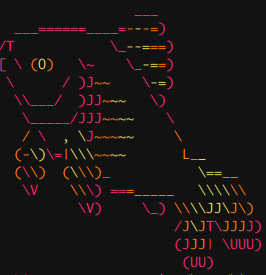
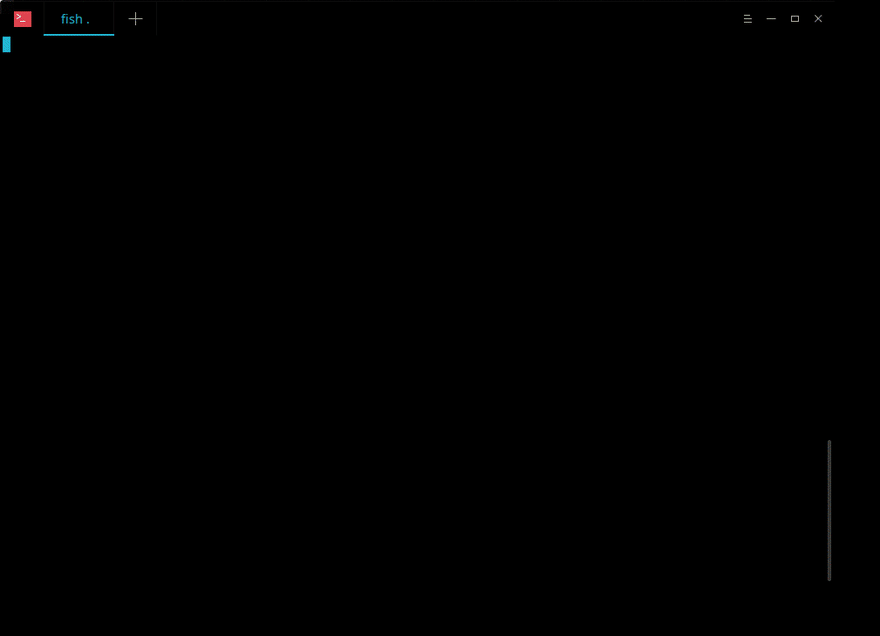


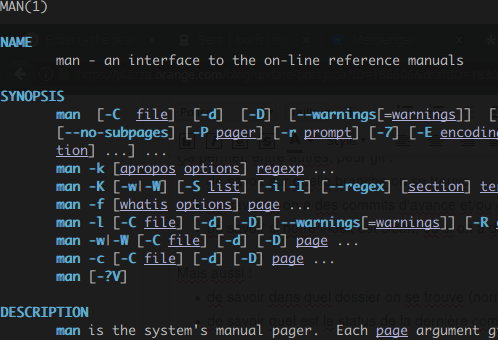

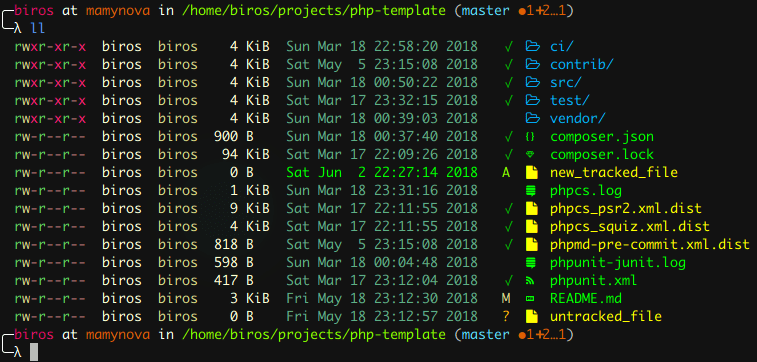

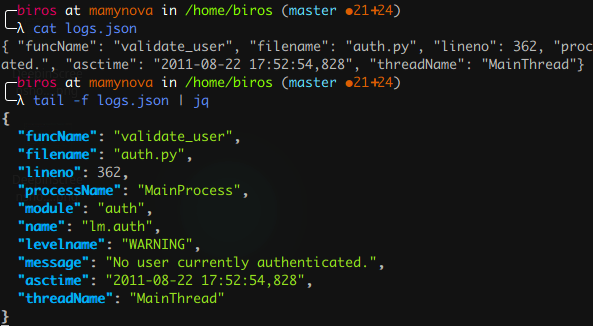





Top comments (33)
An alternative to colorman with more options: fish-colored-man.
Btw, can you share your colorscheme? I took the liberty to look for it in your dotfiles repo but couldn't find it. Thanks for the post!
I use Neovim's man page viewing functionality for this. $MANPAGER is set to
nvim -c 'set ft=man' -.I had no idea neovim had such a functionality. Just tried and looks really nice! Nice enough to really make me consider change to it. Thanks!
You mean my colorscheme for colorman ? I don't have one.
It's the default colors of the plugin.
No, I mean the terminal colorscheme, the one you see in, for example, your first gif.
The terminal in the gif is deepin-terminal with the default colorscheme as it's not customizable with this term.
But I think that what you're asking for is my prompt: neolambda for fish shell.
Thanks a lot!
I've been using ZSH for ages (but recently without oh-my-zsh) but I keep hearing good things about fish. Do you know any decent comparison article? Maybe I'll try it.
My main worry is that quick oneliners would not work there as they used.
I used zsh a long time ago when I was a student. It was more user-friendly than bash.
But as I didn't use since more than 15 years, I couldn't say more about the comparison with fish.
Recently I've installed zsh + oh-my-zsh as a POSIX alternative to fish, but it seems that many native features of fish (auto-completion, coloration, ...) have to be configured manually in zsh (through plugins or conf file).
Fish works great out of the box!
Actually I don't like autocompletion. It can reveal far too much when you are for example showing something for larger audience ;) So having that built-in in fish does not count for me as better. But I guess I'll give it another shot some time soon.
I get your point :)
But the real strength of fish is its ability to auto-complete commands and sub-commands, for example for git (branch , docker stop , ...). It's really powerful !
Note that sometimes having colors in your prompt will break when connecting over SSH (e.g. PuTTy on Windows) ... :-) I have decided to use a uncolored standard prompt for this very reason.
re: CLI tools, jarun has some nice ones, mostly written in Python.
Does that apply to using
docker-compose execlocally? When I try to rundocker-compose exec tail -f log/development.log | jqI "Invalid numeric literal at line 1, column 11"I try to learn more and more about how to use the CLI. My dev laptop that I use for university assigments runs Linux. I recently switch to zsh with ohmyzsh. I downloaded a popular theme which enables many useful visual cues. It has a solid auto completion and suggestion, besides many other useful features.
Fish is one of my favorite shells! nice to see it mentioned. great collection of resources by the way!
Have a look at spacefish, it's crazy fish theme with integrations with many, many languages and tools !
Will do! thanks
Regular
lsdoes this with the-hflag. In fact, so do a lot of CLI apps, likeduanddffor example.try best tig integration for vim.
github.com/iberianpig/tig-explorer...
There are much fish ((f)riendly (i)nteractive (sh)ell) users because of the autocompletion, syntax highlighting etc. But actually fish is much less compatible with other shells. For example, ZSH & Bash are really similar, and they can interop with "many" scripts. You can get similar features using plugins. I do not think there is a reason to use fish.
I use both fish and bash. Fish is my term shell and bash is my scripting shell.
I agree with you on fish not being compliant with bash and other bourne shells. That's because fish isn't 100% POSIX compliant.
I actually just tried the Fish shell this past week and while I absolutely loved how it had somany great tools right out of the box, I ended up having to go back to my old trusty ZSH + Oh-My-ZSH combo.
Because fish isn't fully bash compatible (commands like && don't work.) it broke many plugins I rely on in in VSCode, as well as a few ruby cli tools I use.
I loved it, but the headache and hassle just wasnt worth it.
To get most of the same gains, I just use ZSH + Oh-My-ZSH + Spaceship ZSH.
Everything just works.
Yes, spaceship is also great with fish. I love their prompt !
could you share the fonts configured on your setup to properly display Unicode characters like
\uE74Eand\uE749?What do you think about fselect to search files with SQL-like queries?
It seems powerful but I don't use so much file search in my every day tasks.
Fantastic article, thank you for inspiration!
Maybe TermToSVG could be also mentioned to record some terminal sessions !
The main advantage/disavantage is it output the session as an animated SVG !
What powerline font is used in the example:

It's monaco-powerline.
Check out lnav for logfiles
Thanks, I'll have a look on it !